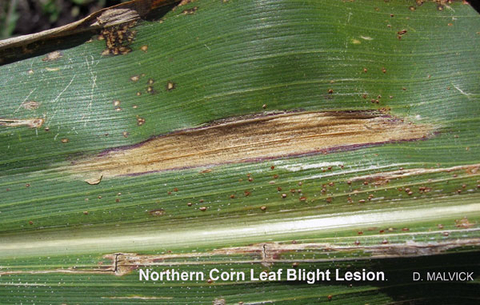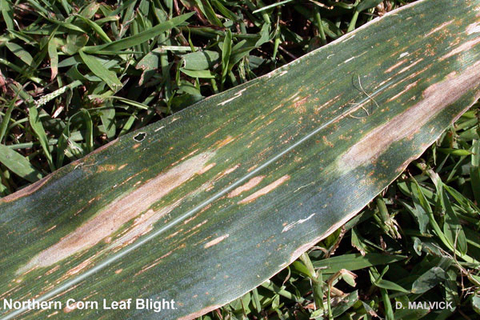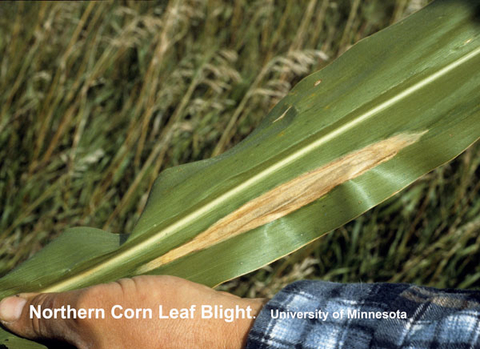Northern corn leaf blight occurs commonly in most areas of the Midwestern U.S. where corn is grown. Yield losses are typically minimal, but can become significant with susceptible hybrids or inbreds. The disease can cause significant grain loss if susceptible hybrids are infected before silking.
Symptoms
Typical symptoms of northern corn leaf blight are canoe-shaped lesions 1 inch to 6 inches long. The lesions are initially bordered by gray-green margins. They eventually turn tan colored and may contain dark areas of fungal sporulation. The length or size of lesions may vary with in different corn hybrids reactions with different resistance genes. Lesions begin on the lower leaves and then spread to upper leaves. Severe symptoms can progress rapidly, resulting in blighted leaves. The disease can be confused with symptoms of Goss's leaf blight on some hybrids, and perhaps with Stewarts wilt where this disease occurs.
Conditions and timing that favor disease
The disease is most prevalent during moderate temperatures (64 to 80 degrees F) with prolonged periods of moisture. It typically appears at or after silking, but the disease is usually more severe when infection occurs earlier.
Causal pathogen
The pathogen is the fungus Exserohilum turcicum (syn. Helminthosporium turcicum). It overwinters on corn leaf debris. Several races of this pathogen are known that interact differently with different resistance genes.
Disease management
Use resistant hybrids. Fungicides may be warranted on inbreds for seed production during the early stages of this disease. Crop rotation and tillage practices may be helpful in some cases.
Reviewed in 2018




